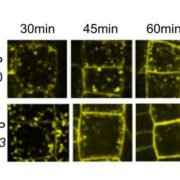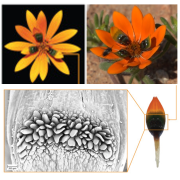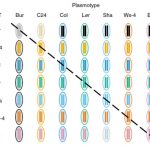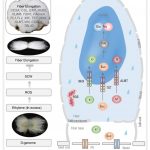Review. Same, but different: growth responses of primary and lateral roots ($) (J. Exp. Bot.)
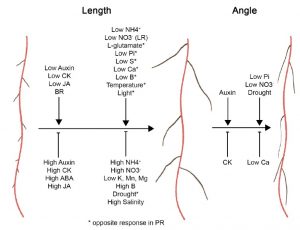 Lateral roots arising from programmed cell division from primary roots in both monocots and dicots share some similarities and dissimilarities in developmental signaling. In this review, Waidmann et al. discuss lateral root organogenesis and elongation with respect to hormone, nutrient, and abiotic conditions. This paper highlights important discoveries about lateral root elongation and the molecular signals that alter root system architecture, which allow breeders to select for the desired trait. The phytohormone auxin elicits differential growth response between primary and lateral root elongation in different plant species. Cytokinin, a synergistic and antagonistic hormone to auxin, causes a differential response in lateral root elongation depending on the growth stage of the lateral root. In a similar context, the authors highlighted the significance of abscisic acid, ethylene, and other hormones. Also, the nutrients such as nitrate and phosphate exhibit differential effect on lateral root compared to primary root elongation by modulating transporters and hormone signaling. Abiotic stress like drought causes an increase in primary root elongation (in search of water) and inhibits lateral root elongation by altering hormones. light and temperature also exhibit differential growth responses between primary and lateral roots. Although much is known yet about the influence of different factors on root system architecture, the molecular signaling and interaction of different signals still need to be determined. (Summary by Suresh Damodaran) J. Exp. Bot. 10.1093/jxb/eraa027
Lateral roots arising from programmed cell division from primary roots in both monocots and dicots share some similarities and dissimilarities in developmental signaling. In this review, Waidmann et al. discuss lateral root organogenesis and elongation with respect to hormone, nutrient, and abiotic conditions. This paper highlights important discoveries about lateral root elongation and the molecular signals that alter root system architecture, which allow breeders to select for the desired trait. The phytohormone auxin elicits differential growth response between primary and lateral root elongation in different plant species. Cytokinin, a synergistic and antagonistic hormone to auxin, causes a differential response in lateral root elongation depending on the growth stage of the lateral root. In a similar context, the authors highlighted the significance of abscisic acid, ethylene, and other hormones. Also, the nutrients such as nitrate and phosphate exhibit differential effect on lateral root compared to primary root elongation by modulating transporters and hormone signaling. Abiotic stress like drought causes an increase in primary root elongation (in search of water) and inhibits lateral root elongation by altering hormones. light and temperature also exhibit differential growth responses between primary and lateral roots. Although much is known yet about the influence of different factors on root system architecture, the molecular signaling and interaction of different signals still need to be determined. (Summary by Suresh Damodaran) J. Exp. Bot. 10.1093/jxb/eraa027


